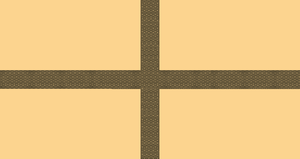Kakuri community
The Kakuri community is one of the four ethnic communities of the state of Mirei, formed by the Kakuri people. It is an indirect continuation of the Kakuri Stift founded as a non-territorial member state of Vittmark in 7578, operational until the Kakuri community decided to ally itself with the new nation state of Sokoku instead in 76XX. Beside functioning as an ethnic community, the Kakuri community also forms the public administration of the community's capital Toshi-bu and the nearby located town of Nushuwadaru. It is one of the four pillars of government within the state of Mirei with both a territorial and non-territorial element.
Kakuri people
| Ethnic group | |||
|---|---|---|---|
 General phenotype | |||
| Height comparison | |||

| |||
| Eye colour |
| ||
| Hair colour and type |
| ||
| Total population | |||
| 60,000 | |||
| Location map | |||

| |||
| Regions with significant populations | |||
| Languages | Kakuri | ||
| Religions | Guso, Mellanhand Orkanan | ||
| Related ethnic groups | |||
| Shriaav, Samzayid, Hueiwei | |||
Membership of the Kakuri community is applied automatically at birth, if both parents already are a member of the community. If only one parent is Kakuri, a separate application is needed and will be judged by the community leadership. Membership is therefore strictly limited to the Kakuri people, an isolated ethnic group mainly living on Kakurishima (Carlsö) with roots in northern Altaia or western Davai.
It is the last remnant of the Tsuki Integrality which thrived in the region of the Julian Sea during the 70th and 71st centuries. The Kakuri speak their own language isolate, but their writing system has been adopted as the main writing system for the completely unrelated Bahasa Sokoku common language. Kakuri seem to be more related to Shriaav and Samzayid ethnicities of northern Altaia and western Davai. About 1.5% of the Kakuri population is naturally blonde, which would indicate that about 12% of the Kakuri bear Samzayid DNA.
At present (7690) the Kakuri community has about 56,000 registered members, of which 52,000 are living in the state of Mirei. 36% of the population lives in the community's seat of government Toshi-bu, a town that is completely off-limits to non-Kakuri people. This radical measurement is in place to protect the unique Kakuri culture from being absorbed into Sokokan society.
Government
Historically speaking, Kakuri government is largely meritocratic by nature. A leading group is elected by the Kakuri people (at first only in Toshi-bu, nowadays by the entire community) solely based on their skills in poetry, songwriting, performance and dance. The current leadership is a group of four females called Miseru-ne, elected in 7687. The main task of the leadership is to write down current events in the form of prose, songs and plays.
The reason behind this peculiar type of local government can be summarised by the expression that history is written by approval of the current leadership in general, as well as the artists' role in society to catch and reproduce current events, experiences, interpretations and stories. The effect of popular and leading artists of the mindset of a society is always large, but has been formalised in the Kakuri community. This leadership serves therefore as synonymous to the legislative, where their texts and lyrics should be interpreted as policies, rules and law. The previous leadership keeps on functioning as the judiciary, often overseeing the regulation they themselves have laid down.
Due to these characteristics, Kakuri government is rather non-interventional, lacking a public executive branch. This is very unlike the Mireist principles guiding Sokoku as a planned economy with a strongly developed executive element. It is therefore an anomaly in local government in this nation. Community government is focusing on social and cultural issues. But when it comes to issues like education or town management, the leadership's role is to stimulate and facilitate cooperation between individuals, blades and extended families, creating the right circumstances for voluntary cooperation and policy implementation. For example, road maintenance is outsourced to the residents of that road, where the community provides guidelines and organisational tools for the people to manage this part of infrastructure themselves. Kakuri leadership are sometimes called "solution brokers" with a leadership style that is mainly facilitating and hardly guiding on the content of issues.
Police force
The community has its own police force, the Gacha Kuru, providing law enforcement not only in the territory governed directly by the Kakuri community, but also in other jurisdictions when members of the community are involved. For example, a domestic dispute among a Kakuri family outside Mirei preferably gets handled by the Gacha Kuru, if such a law enforcement officer is available in that area. In places with a small Kakuri representation these tasks might be delegated to a local police officer. This can lead to confusing situations where police officers can uphold different regulations in the same area. Furthermore, the Gacha Kuru is allowed to operate as security forces preventing non-members of the community access to Toshi-bu and its surrounding area.
State and federal level status
The community has a representation on the state level, where it still needs to contribute to issues like security, law enforcement, infrastructure and advancement through a completely different government culture.
As an important ethnic and cultural minority, the Kakuri community has its own designated seat in federal parliament, currently occupied by Satou Kotomi. The Kakuri presence in the capital is organised around Hotel Exemplar Mirei.
Historical leadership
- 7552-7555 Kyusa
- 7555-7570 Oto
- 7570-7606 Nokumo Nobono (see also: Kakuri Stift)
- 7606-7614 Usugi
- 7614-7622 Metara
- 7622-7630 Chibishu
- 7630-7638 Hanatera
- 7638-7646 Ashi
- 7646-7652 Sougo Kakushou Hakai
- 7652-7660 Gia no unmei
- 7660-7669 Kesshite suberiochinaide kudasai (Kesuku)
- 7669-7676 Aoi Kansei (single person leadership)
- 7676-7679 Chika Kaho (single person leadership)
- 7679-7684 Kyouki
- 7684-7687 Kajiya
- 7687-current Miseru-ne